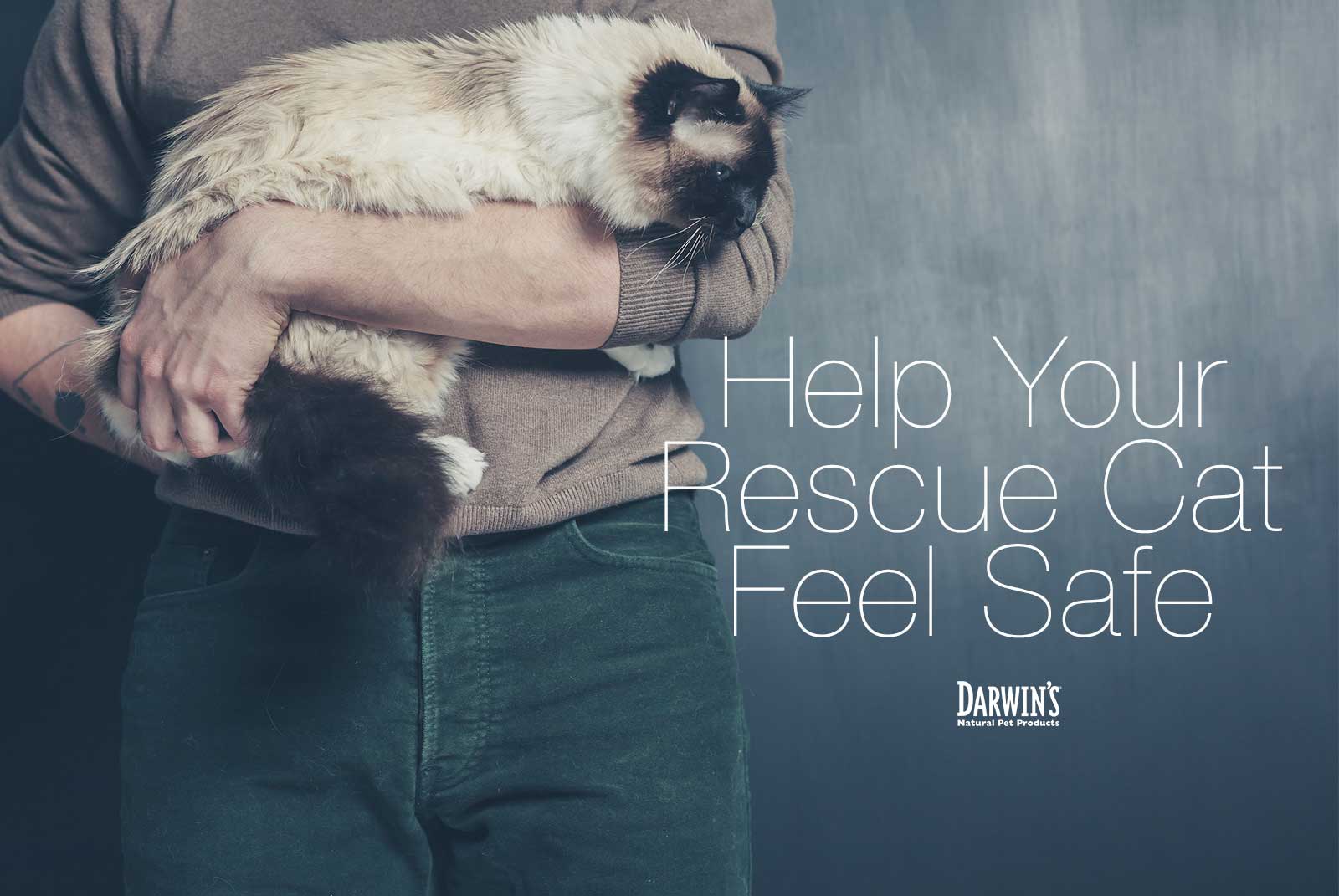Bringing Home a New Cat
7/11/16

How to help your new rescue cat feel safe.
Perhaps you went looking for a new feline friend or maybe they found you; either way you took one look into those big beautiful eyes and fell in love. Now, how do you make sure your new family member is happy, safe, and will adjust well to their new forever home?
Give your new cat their own space
Whether they came from a shelter or off the streets your new friend has been through a lot in a short amount of time. Help keep them from being overwhelmed by giving them their own space. This could be a less traveled room, a bathroom, anywhere that’s quiet. This should be their space and their space only for the first week or two in their new home. Make sure that they have access to a litter box, water and food bowls (away from their litter box), scratching post, hiding places, and a soft spot to sleep.
Let them hide
- Your new arrival may be overwhelmed with all of the new smells, people, and spaces.
- They may need some time to recover from being in a loud and scary shelter.
- They may never have been inside a home before.
- Visit them often but don’t get offended if they hide from you. Cats need time to adjust.
- Cats prefer high up, dark places so it would be ideal if their space is in a room that has this.
- Other great hiding spaces could be their carrier with the door open, a cat tent or play tube, or a cardboard box with two holes cut into it.
Click here for ideas. Cat’s like to have an exit at all times. Don’t be alarmed if they find their own spot, but do make sure that it’s safe for them to be there.
Leave your rescue kitty to determine when it’s time to explore the whole house
Some cats might be ready to explore the house after a few days but some cats can hide for weeks or months before deciding they’re comfortable. The best way to tell this is by their behavior. Do they still hide every time you walk through the door? If so they’re probably not ready. Do they greet you or try to escape instead? This is a good sign they’re ready.
While we think of cats as predators because of their amazing hunting skills, cats are actually also prey animals. And this is the thing that drives the bulk of their behavior.
Nancy Howard – The Whole Cat and Kaboodle
Cat proof your home
Vents and places between furniture and walls might seem like a good idea to them, but it’s very easy to become trapped or lost. Make sure your household plants are not poisonous to cats. Take a little time to find out what foods are dangerous. Curtain and electronic cords can be a chocking risk we recommend bundling them for safety. For more ides on kitty proofing your home click here for our Pet Safety Tips on Pinterest.
Let your new cat leave their scent and get used to yours
Cats are territorial creatures who navigate by scent. Leaving your own worn shirt or blanket for them in their room might help them to get used to you, especially if they’re not used to human company. Once they’re roaming the house leaving blankets or towels that they’ve slept on around the house can help them establish this new territory as their own.
Rescue cats need to come to you on their own terms
You and your family will no doubt be excited to see your new furry friend but try and keep people from visiting all at once. Start with one or two visitors at a time. Again, don’t force your cat to come out. Simply sit or lie on the floor and let them come to you when they’re comfortable. You might bring a book to read out loud and give them time to acclimate to you. Playing with your new cat and giving treats may help them to associate you with good things. You might even be able to coax them out of their hiding spaces and bond with you.
Introducing other pets and family members to your new rescue
Always supervise small children under 5 with your new pet and make sure they know not to approach too fast or pet too forcefully. We also suggest introducing your other pets in an orderly manner. Click here for some tips.
Don’t change too much, too quickly
It’s only natural to want your new addition to have the best of everything, but keeping their food the same initially may help them to adjust better. It’s very important for their health that cats don’t go 24 hours without eating, so switching diets right away could lead to health issues. Once they’ve settled in you can begin to experiment with their food, but starting out with consistency is best. Its also important not to rush to a new food, cats are notoriously finicky.
Cats are individuals. One cat may acclimate over a few days and another can take months. Either way, I can’t stress this enough, you don’t want to rush them into accepting you or their new home. Let them gauge for themselves what they’re comfortable with and most importantly give them time. You’ll have a happy kitty to share your home with before you know it.
Are you looking to adopt a cat?
Here are some more resources for bringing your new cat home!
Darwin’s Foster & Rescue Pin board

I am a crazy hat collector, video game enthusiast, and former self-proclaimed cat whisperer with a love and devotion to all of our four legged friends. In my spare time I am also a customer service specialist at Darwin’s Natural Pet Products.



